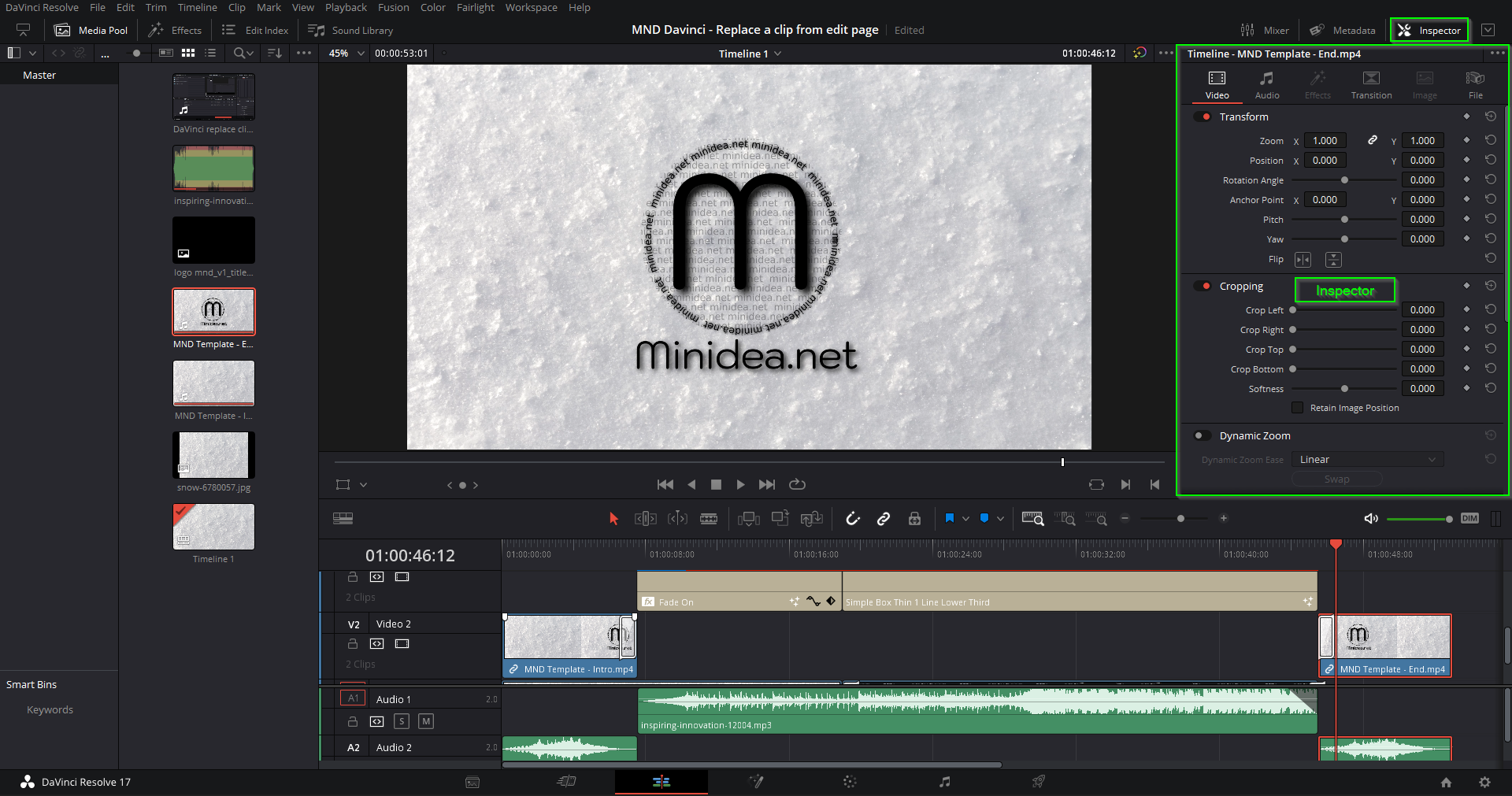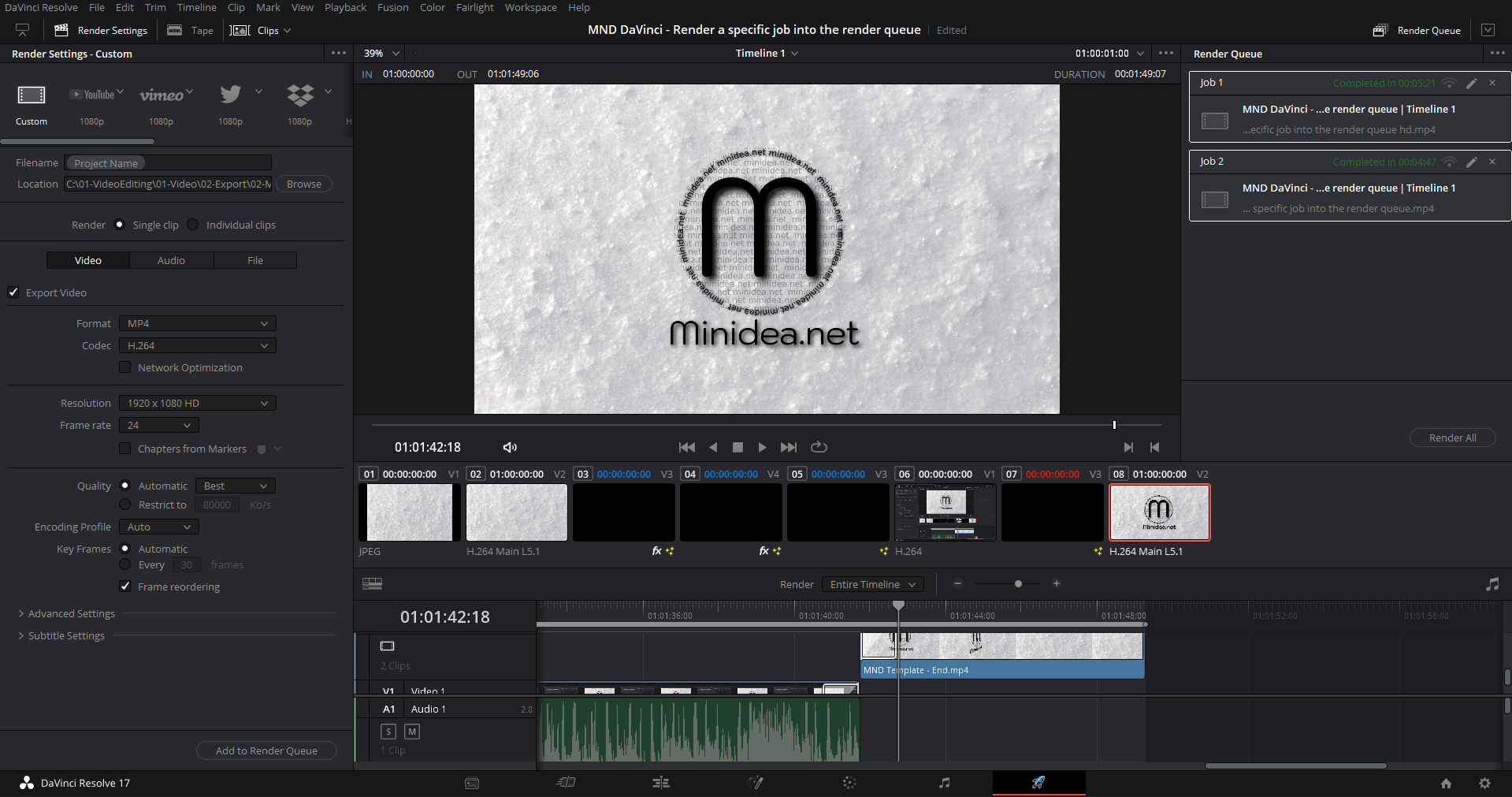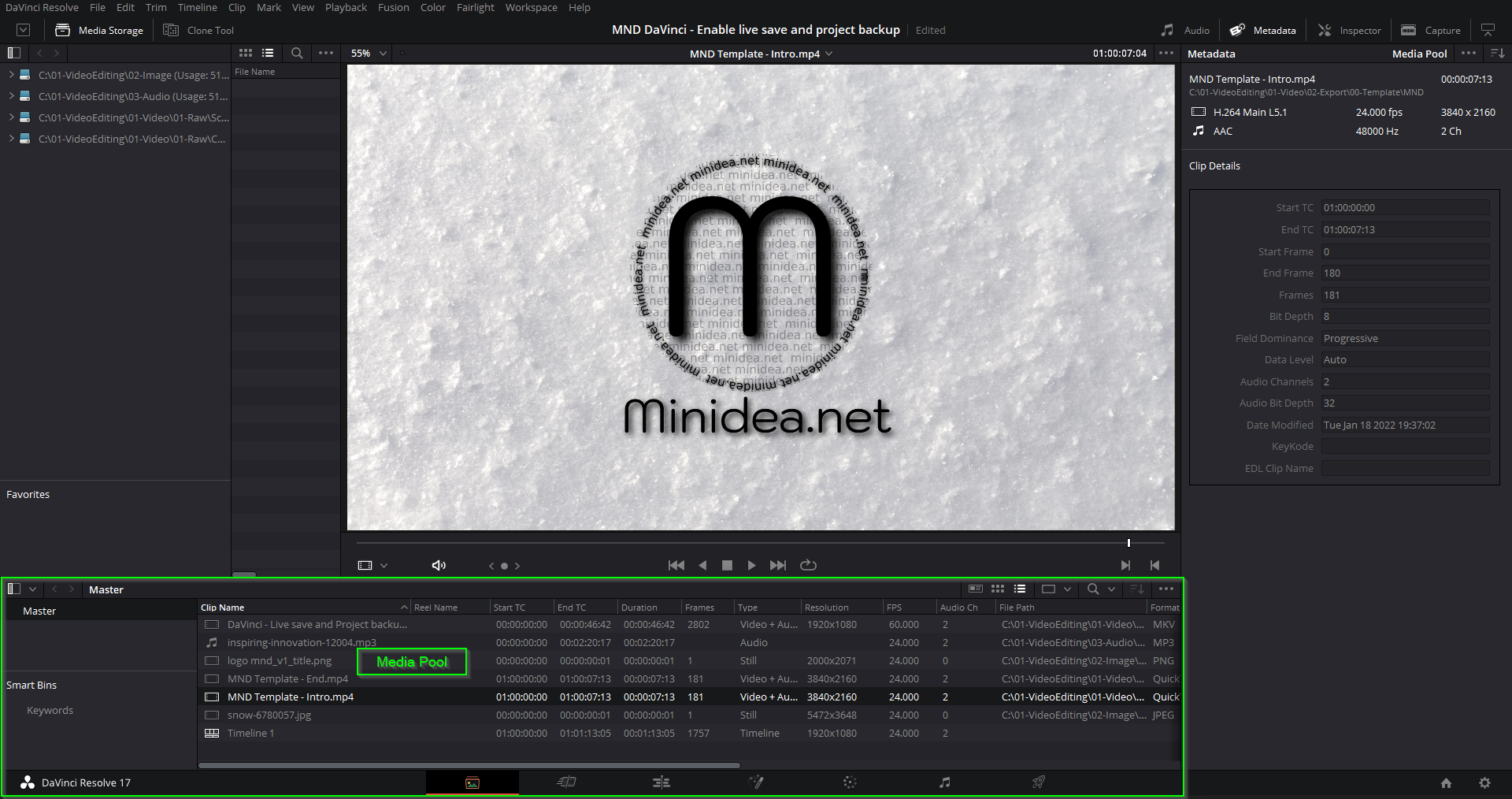For anyone looking to get more out of their video editing and post-production work, finding a central spot for all the helpful information can feel like a real treasure hunt. It's a bit like searching for that perfect piece of equipment, isn't it? You want somewhere reliable, somewhere you can go back to again and again, especially when you're working with something as deep and powerful as DaVinci Resolve. This kind of place, a really good knowledge base, could make all the difference in your creative journey.
So, picture a spot where every little trick, every clever shortcut, and all the community wisdom about DaVinci Resolve comes together. It's not just about reading dry facts, you know, but about actually connecting with the ideas and the people who are using this amazing software every day. This sort of resource helps you not just learn, but also share your own discoveries and maybe even help someone else out who's just starting or stuck on something tricky.
This article will take a look at what a truly useful DaVinci Resolve Wiki might be like, drawing inspiration from how people already connect and share information online. We'll explore how such a place could bring people together, make learning easier, and perhaps even open up new ways to collaborate and grow your skills. It's really about building a space where everyone feels welcome to contribute and discover.
Table of Contents
- Connecting Creatives - The DaVinci Resolve Wiki Way
- Sharing Your Work - What Can You Post on a DaVinci Resolve Wiki?
- Who Sees What - How Does a DaVinci Resolve Wiki Handle Privacy?
- Finding and Selling Assets - A DaVinci Resolve Wiki Marketplace?
- Community Spots - Why Are DaVinci Resolve Wiki Groups Important?
- Talking It Through - How Does a DaVinci Resolve Wiki Help You Chat?
- Getting Started with the DaVinci Resolve Wiki
- Staying Up to Date with the DaVinci Resolve Wiki
Connecting Creatives - The DaVinci Resolve Wiki Way
Getting started with any online community, like a DaVinci Resolve Wiki, usually begins with setting up your own space. You might need to create an account, or if you already have one, just sign in. This first step is pretty simple, you know, and it opens up a whole world of possibilities. It’s how you get your foot in the door, so to speak, ready to explore what the community has to offer. It’s like getting your personal key to a big library filled with shared knowledge.
Once you are inside, the whole point is to connect with other people who share your passion for video editing. You can look for folks you already know, perhaps from other creative projects, or find new friends who are also working with DaVinci Resolve. It's a way to build your network, to find others who are on a similar creative path. You can, for example, look up someone whose work you admire and see what they have contributed to the DaVinci Resolve Wiki, which is pretty neat.
This connecting isn't just about adding names to a list, though. It's about finding people with whom you can share ideas, ask questions, and perhaps even collaborate on something. You might find someone who specializes in color grading, or perhaps a person who is really good with Fusion effects. Building these connections makes the whole experience much richer, giving you a sense of belonging within the DaVinci Resolve community. It's truly a place where shared interests bring people closer.
- Lester Holt Health
- Beverlyvance
- Is Ron Jermey In Jail
- Dana Perino Husband Health Condition
- Is John Travolra Gay
How Does the DaVinci Resolve Wiki Bring People Together?
The DaVinci Resolve Wiki works to bring people together by giving everyone a common ground. It's a spot where individuals can meet, talk, and learn from each other, all focused on a shared interest. You might find yourself chatting with someone from across the globe about a particular editing technique, which is actually quite amazing. This kind of shared space makes it easier to find others who understand the specific challenges and joys of working with video. It's a common meeting place, in a way.
It helps people connect by making it simple to see what others are doing and thinking. You can, for instance, see who is contributing to certain articles or discussions, and then reach out to them directly. This setup really helps foster a sense of community, where everyone feels like they are part of something bigger. It’s not just about getting information; it’s about getting to know the people who create and use that information. This connection helps everyone grow.
Moreover, the structure of a DaVinci Resolve Wiki, with its ability to link different topics and contributors, naturally encourages people to find common interests. You might start by looking for a specific tutorial, and then discover a whole group of people discussing that very topic. This organic way of finding others makes the experience feel less like a search and more like a discovery. It’s quite a natural way to form new bonds and friendships, helping everyone feel a bit more connected.
Sharing Your Work - What Can You Post on a DaVinci Resolve Wiki?
A big part of what makes a DaVinci Resolve Wiki useful is the ability to share. You can post photos, perhaps screenshots of your project settings, or even short video clips showing off a particular effect you created. This kind of sharing helps others see exactly what you are talking about, making explanations much clearer. It’s a bit like showing your work in a classroom, where seeing is believing for many people. You can share your creative output directly, which is pretty helpful.
Beyond just pictures and moving images, you can also send messages to other users. This means you can have direct conversations, ask specific questions, or offer personal tips. It’s a very direct way to communicate, which is useful when you need a quick answer or want to discuss something in more detail. These messages help to build personal connections within the wider DaVinci Resolve Wiki community, making it feel more like a real conversation than just reading text.
And, of course, a good DaVinci Resolve Wiki would keep you in the loop. You can get updates on new articles, discussions, or even new features related to DaVinci Resolve itself. This means you are always aware of what is happening, what new knowledge has been added, or what conversations are currently active. Staying updated ensures you don't miss out on important information or interesting discussions, keeping you engaged with the flow of shared wisdom.
What Kind of Content Can You Share on the DaVinci Resolve Wiki?
When you think about what to put on a DaVinci Resolve Wiki, the possibilities are quite open. You could share detailed written guides, perhaps about how to use a specific tool or how to achieve a certain look. These written pieces are very useful for people who prefer to read step-by-step instructions. They offer a clear path for learning, which is definitely something many users appreciate. You can really get into the specifics, which is good.
Then there are the visual things. You might upload images that show different stages of a color grade, or perhaps a series of screenshots that illustrate a complex node tree in Fusion. For some people, seeing is much more effective than just reading. These visuals provide a quick way to grasp ideas that might be hard to explain with just words. They are, in some respects, like visual examples that help clarify points.
And let's not forget about actual video examples. You could share short clips demonstrating a particular editing technique, or perhaps a before-and-after of a visual effect. These moving images bring your explanations to life, making them much more engaging and easier to follow. They are, you know, almost like mini-tutorials built right into the wiki. This blend of text, images, and videos makes the DaVinci Resolve Wiki a truly rich resource for learning and sharing.
Who Sees What - How Does a DaVinci Resolve Wiki Handle Privacy?
Sometimes, when you share something, you might wonder who actually gets to see it. On a DaVinci Resolve Wiki, there could be times when an owner of a piece of content has decided to share it only with a select few people. This might happen if it's a work in progress, or something very specific to a small group's project. It's a way of keeping things private until they are ready for a wider audience, or perhaps only for specific collaborators. This sort of control is pretty important, you know.
Another reason you might not see something is if the person who put it there changed their mind about who could view it. They might have initially made it public, but then decided to restrict access to a smaller group, or even just to themselves. This ability to change viewing permissions gives people a lot of control over their contributions. It means they can adjust how widely their information is shared, which is quite useful for managing personal content.
And, of course, sometimes things just get taken down. A piece of content might have been deleted by its owner for any number of reasons. Maybe it's outdated, or perhaps it was just a temporary post. When something is gone, it's gone, and that's just how it works sometimes. These different ways of handling visibility and removal are all part of keeping the DaVinci Resolve Wiki a managed and organized space, giving people choices about their shared material.
How Does the DaVinci Resolve Wiki Protect Your Contributions?
Keeping your contributions safe and deciding who gets to see them is a big part of a good DaVinci Resolve Wiki. There are typically ways to control your privacy settings, letting you choose exactly who can view the things you put up. This means you can share certain tips or project files with just a few trusted friends, or make them available to everyone. It's about having that choice, which is really quite comforting.
Beyond just who sees your stuff, there are also measures to add extra protection to your own account. This could involve things like stronger passwords or other security steps to make sure only you can access your personal area. Keeping your account secure is important, especially when you are sharing your creative work and knowledge. It helps give you peace of mind, knowing your personal space on the DaVinci Resolve Wiki is guarded.
These safety measures are there to make sure that your experience on the DaVinci Resolve Wiki is a good one, where you feel secure in sharing your ideas and work. It's about creating an environment where people feel comfortable contributing without worrying about unwanted access. This focus on privacy and safety helps build trust within the community, encouraging more people to participate and share their unique insights. It's really quite a fundamental part of building a good online space.
Finding and Selling Assets - A DaVinci Resolve Wiki Marketplace?
Imagine a section within the DaVinci Resolve Wiki where you could find things to buy or sell, perhaps templates, custom LUTs, or unique effects packages. This kind of marketplace could be a really helpful addition, giving creators a spot to both find resources they need and offer their own creations to others. It’s a bit like a specialized shop, but built right into the learning hub. You could, for instance, pick up a new set of color grading presets directly from another user, which is pretty convenient.
This area would be a place to learn about how to go about buying and selling these kinds of digital goods. You could find guides on how to list your items, how to make sure they are properly described, and how to handle transactions. It’s not just a listing board; it’s also a learning tool for anyone interested in the commercial side of creative assets. This educational aspect helps everyone participate fairly and effectively, which is quite important for a healthy marketplace.
Having a dedicated space for this within the DaVinci Resolve Wiki means everything is kept in one central location. You wouldn't have to go searching all over the internet for specific assets; they would be right there where you are already learning and connecting. This makes the whole process of finding and exchanging creative tools much smoother and more efficient. It really helps streamline things for people looking for specific items or wanting to sell their own. It's a useful resource, definitely.
Exploring the DaVinci Resolve Wiki for Creative Resources
When you are looking for creative resources, the DaVinci Resolve Wiki could become a go-to spot. You might be searching for a particular sound effect, or perhaps a unique transition to make your video stand out. This kind of resource section would collect all those helpful bits and pieces, making them easy to find and use. It’s like having a well-organized toolbox, with everything in its right place. You could, quite simply, find what you need without much fuss.
The wiki could also feature contributions from other users, like custom titles or even small scripts that automate certain tasks within DaVinci Resolve. These user-created items are often incredibly practical, coming from people who are using the software every day and have found clever solutions to common problems. It's a way of sharing practical knowledge in a very direct and usable format. This sort of shared collection really helps everyone improve their workflow.
And it's not just about getting things; it's also about giving back. If you create something useful, like a cool new effect or a time-saving template, you could share it with the community through this resource area. This helps everyone, as more contributions mean more options for everyone else. It builds a sense of shared ownership and collective growth, making the DaVinci Resolve Wiki a truly collaborative space for creative resources. It’s a pretty neat way to contribute, you know.
Community Spots - Why Are DaVinci Resolve Wiki Groups Important?
Groups are a fantastic way to bring people together around specific topics within the DaVinci Resolve Wiki. You could have a group dedicated to color grading, another for Fusion effects, and yet another for audio post-production. These smaller communities allow for more focused discussions and sharing of ideas among people with very specific interests. It’s like having mini-gatherings inside the larger community, which is quite helpful for deep dives into particular subjects.
Learning how to create and manage these groups would be a key part of the DaVinci Resolve Wiki. You could set up a group for a particular project you are working on, inviting only your collaborators, or create a public group for anyone interested in, say, documentary editing. This ability to customize your group allows for a lot of flexibility in how people connect and share information. It really puts the control in the hands of the users, which is important.
These groups become places where meaningful conversations can happen. Instead of general chatter, you get discussions that are really relevant to a particular area of DaVinci Resolve. This focus helps people get answers to very specific questions and learn from others who are truly experts in that niche. It’s a very effective way to build deeper connections and share more detailed knowledge, making the DaVinci Resolve Wiki even more valuable as a learning tool.
Building Connections Through DaVinci Resolve Wiki Groups
When you join a DaVinci Resolve Wiki group, you are basically stepping into a smaller, more focused gathering of people who share your specific interests. This makes it much easier to find individuals who are working on similar kinds of projects or facing similar challenges. You might, for example, join a group focused on short film production and immediately connect with others who understand the unique demands of that kind of work. It’s a very direct way to find your people.
These
Related Resources:



Detail Author:
- Name : Maryam McDermott
- Username : meagan69
- Email : monty68@hills.net
- Birthdate : 1990-02-20
- Address : 8658 Marcel Summit New Kaleighton, NE 34995
- Phone : (731) 663-3527
- Company : Hansen, Aufderhar and Steuber
- Job : Athletic Trainer
- Bio : Quia dolores quia numquam esse eaque dicta. Libero quasi dolor officia omnis consectetur.
Socials
tiktok:
- url : https://tiktok.com/@coby_abernathy
- username : coby_abernathy
- bio : Sequi quas et sed aspernatur. Repellendus et repellat alias commodi optio unde.
- followers : 1422
- following : 94
linkedin:
- url : https://linkedin.com/in/coby6459
- username : coby6459
- bio : Quae veritatis debitis debitis rerum dolores.
- followers : 2925
- following : 1584